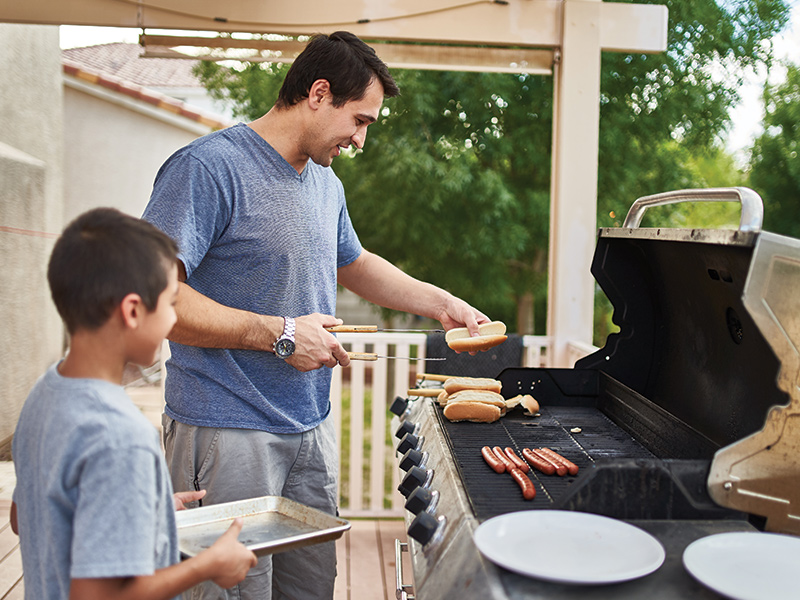Is your propane tank ready for grilling season? Here’s how to tell if it’s time to exchange it -- and how to stay safely fired up all summer long.
The backyard grill -- for some, it’s your summertime BFF. You know how it goes: You spend a lot of time with them, you get into a routine… and over the years you start to overlook the little details.
And as with all friendships, you have to put in a little work to make things right. That means regular maintenance of the heart and soul of your grill: the propane tank. Add these tips to your seasonal prep list -- and keep your backyard barbeques safe and reliable for years to come.
-
Check the propane tank’s expiration date.
Put this at the top of your summer grilling prep checklist. Now, propane itself doesn’t technically “go bad,” but the tanks do. General wear and tear, exposure to corrosive materials, and physical impact or other damage can all contribute to a propane tank’s deterioration. Federal guidelines set limits on how long a propane tank (that includes your grill tank) can safely be used before it needs to be either tested and recertified or replaced.
Every propane tank comes with a series of letters and numbers stamped on its collar (the round piece at the top of the tank). These abbreviations record data such as pressure capacity, the Department of Transportation code the cylinder conforms to, water content, and other information. When checking for expiration, the dates to look for are:
- Manufacture Date Stamped in the format “MM YY” (for example, 05 11), this is the date the cylinder was made. If the manufacture date is before 2011 (it’s 2021 now) it’s time to swap it out.
- Retest Date There may be a date stamped after these words indicating a previous tank recertification.
Federal regulations require most propane grill tanks to be recertified or replaced every 10 years after the date of manufacture. So if Obama was still president the last time you checked your propane tank’s expiration date, it is definitely time to take another look -- it may just be time to exchange your grill’s tank for a fresh one.
-
Check for corrosion or other damage.
Give your propane cylinder a visual inspection. Some warning signs include:
- Rust
- Dents
- Cracks (beyond surface scratches from normal wear and tear)
- Leaks around the pressure valve
- Evidence of fire or heat damage
- Missing collar, valve cover, or other parts
-
Recycle Responsibly.
What do you do with an expired or damaged propane grill tank? It’s a common question, along with “If there’s still propane in an expired tank, can I keep using the tank until it’s gone?” We understand not wanting to waste propane, but the simple answer to this question is “no.” For your safety, we never recommend using a damaged or expired propane tank.
Similarly, you might be wondering: “If there’s still propane in it, can I recycle my grill tank?” The answer to that is more complicated. Because the cylinders contain material that is flammable and potentially harmful if it escapes into the air, most recycling centers won’t accept them.
Instead, dispose of your propane tank safely by taking it to an Amerigas authorized cylinder exchange or refill location. They’ll be able to remove any remaining propane from the cylinder, recycle or dispose of it properly, and hook you up with a fresh tank. It’s the best way to keep your friendship with your grill going strong.
If you see any of these signs, or know the cylinder has been damaged or overheated, do not attempt to refill your tank. And no worries -- you don’t have to be an expert. If there’s any doubt, simply get in touch with AmeriGas for testing or disposal. (Better safe than sorry!)
Find an Amerigas tank exchange location near you
Learn more about propane tank care and recertification:
Quick Guide to Recertifying Your Propane Grilling Tank
Buy, Exchange, Dispose: Propane Tank Life Cycle FAQs
Propane Tanks Go to blog list page filtered for the category

